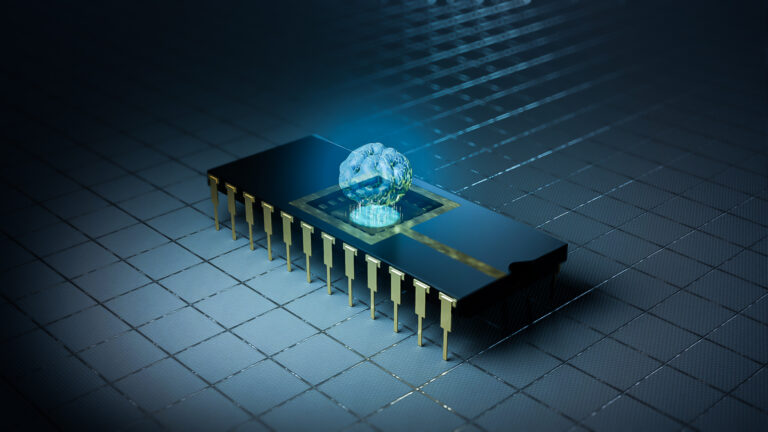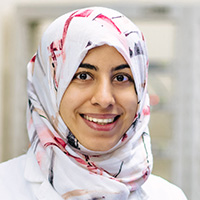Material Science and Engineering
Stopping the sulfur shuttle for better batteries
A layer of hierarchically three-dimensional porous graphene greatly suppresses a problem holding back the development of lithium-sulfur batteries.

A KAUST team has developed a material that is hierarchically porous in three dimensions, meaning it has an array of pores of different sizes. © 2021 KAUST; Anastasia Serin
A KAUST team has developed a material that is hierarchically porous in three dimensions, meaning it has an array of pores of different sizes. © 2021 KAUST; Anastasia Serin
As our society and transportation systems become increasingly electrified, scientists worldwide are seeking more efficient and higher capacity storage systems. Researchers at KAUST have made an important contribution by modifying lithium-sulfur (Li-S) batteries to suppress a problem known as polysulfide shuttling.
“The bottleneck in the utilization of renewable energy, especially in transportation, is the need for high-density batteries,” says Eman Alhajji, Ph.D. student and first author of the research paper.

The battery designed by Eman Alhajji (left) and Husam Alshareef (right) is suitable for large-scale commercial application.
© 2021 KAUST; Anastasia Serin
Li-S batteries have several potential advantages over the most commonly used types of batteries. They have a higher theoretical energy storage capacity and sulfur is a nontoxic element readily available in nature. Sulfur is also a waste product of the petrochemical industry, so it could be obtained relatively cheaply while increasing the sustainability of another industry.
Polysulfide shuttling involves the movement of sulfur-containing intermediates between the cathode and anode during the battery’s chemical processes. This seriously degrades the capacity and recharging ability of the Li-S battery technologies that have been explored to date.

Sulfur-containing batteries suffer from polysulfide shuttling, which degrades the capacity and recharging ability of Li-S batteries.
© 2021 KAUST; Anastasia Serin
The KAUST team’s solution is based on a layer of graphene. They make this by subjecting a polyimide polymer to laser energy in a process called laser scribing, creating a suitably structured porous material. A key feature is that the material is hierarchically porous in three dimensions, meaning it has an array of pores of different sizes. Nano-sized carbon particles are then added and taken up by the pores to form the final product.
Alhajji and her colleagues found that placing a thin layer of this material between the cathode and anode of an Li-S battery significantly suppresses the polysulfide shuttling.
“Making this freestanding interlayer just a few micrometers thick was a challenge,” says Alhajji, adding, “It was fun to roll it like playdough, but then I had to handle it in a very gentle manner, especially during battery assembly.”

Li-S batteries have several potential advantages over the most commonly used types of battery, such as a higher theoretical energy storage capacity.
© 2021 KAUST; Anastasia Serin
Until now, most options proposed to solve the polysulfide shuttling problem have suffered from limitations that make them unsuitable for large-scale commercial application. In contrast, the laser-scribed graphene developed at KAUST is produced by a method that the researchers describe as “scalable and straightforward.”
Alhajji won a 2021 Materials Research Society Best Poster Award based on her idea for suppressing the shuttling. “This is a really challenging competition,” says Alhajji’s supervisor Husam Alshareef, adding, “Only a handful of students from the Materials Science & Engineering program at KAUST have won this award.”
References
- Alhajji, E., Wang, W., Zhang, W & Alshareef, H.N. A hierarchical three-dimensional porous laser-scribed graphene film for suppressing polysulfide shuttling in lithium−sulfur batteries. ACS Applied Materials & Interfaces 12, 18833-18839 (2021).| article
You might also like

Applied Physics
A single additive enables long-life, high-voltage sodium batteries

Bioengineering
Smart patch detects allergies before symptoms strike

Applied Physics
Two-dimensional altermagnets could power waste heat recovery

Applied Physics
Interface engineering unlocks efficient, stable solar cells

Applied Physics
The right salt supercharges battery lifespan

Applied Physics
Light-powered ‘smart vision’ memories take a leap forward

Applied Physics
Natural polymer boosts solar cells

Material Science and Engineering




